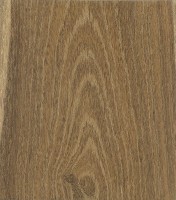 |
Common Name(s): Laburnum, Golden Chain Scientific Name: Laburnum anagyroides Distribution: Central and Southern Europe Tree Size: 20-30 ft (6-9 m) tall, 6-12 in (15-30 cm) trunk diameter Average Dried Weight: 53 lbs/ft3 (850 kg/m3) Specific Gravity (Basic, 12% MC): .69, .85 Janka Hardness: 2,020 lbf (8,990 N)* *Estimated hardness based on specific gravity Modulus of Rupture: No data available Elastic Modulus: No data available Crushing Strength: No data available Shrinkage:No data available |
Color/Appearance: Heartwood color ranges from an orangish brown to a darker violet brown, darkening with age. Clearly demarcated sapwood is a pale yellow. Laburnum’s dark color make it suitable for use as an ebony substitute, particularly within its natural range in Europe. Wide rays can exhibit ray fleck on quartersawn surfaces. Endgrain slices of Laburnum are sometimes used in making a decorative “oyster veneer” pattern for use in furniture.
Grain/Texture: Grain is usually straight, with a fine, even texture. Good natural luster.
Endgrain: Ring-porous; large earlywood pores 2-3 rows wide, medium to large latewood pores in clusters and diagonal tangential bands, moderately numerous; solitary and radial multiples of 2-3; heartwood mineral/gum deposits occasionally present; growth rings distinct; medium to wide rays visible without lens, spacing wide; parenchyma vasicentric and confluent.
Rot Resistance: No official data is available, though it is presumed to be quite durable as it has been used for fenceposts.
Workability: Despite its high density and hardness, Laburnum is generally easy to work. It is known to be an excellent turning wood, and is also favored for carving as well.
Odor: No characteristic odor.
Allergies/Toxicity: Although severe reactions are quite uncommon, Laburnum contains the toxin cytisine. Taken in large quantities, cytisine can be fatal; however, in smaller quantities (such as those inhaled during woodworking operations), constitutional effects have been reported, such as nausea, vomiting, and headache. See the articles Wood Allergies and Toxicity and Wood Dust Safety for more information.
Pricing/Availability: Because of the tree’s small size, Laburnum is likely to remain available only on a small hobbyist scale. Laburnum is primarily only available within its natural range in Europe.
Sustainability: This wood species is not listed in the CITES Appendices or on the IUCN Red List of Threatened Species.
Common Uses: Turned objects, musical instruments (woodwinds), furniture, veneer, fence posts, archery bows, carving, and small specialty wood objects.
Comments: Laburnum is widely planted as an ornamental tree throughout Europe. It sometimes goes by the name “Golden Chain,” so named for its vertical rows of yellowish gold flowers that bloom in the spring.
None available.
None available.
Scans/Pictures: A special thanks to Steve Earis for providing the wood sample and turned photo of this wood species.


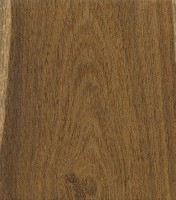
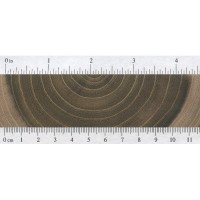
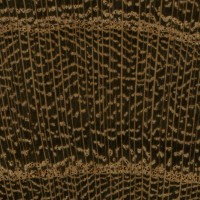
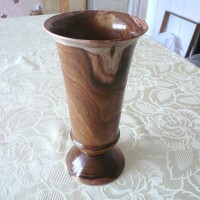



Laburnum also grows in sweden and was wery popular tree for its flowers in spring, today its unfortunaly often cut down due tu its poisinus seeds with parents are afraid children will eatz, a fear that in my upinion is overrated as the seeds are very bitter.
I love turning laburnum, this piece is finished with shellac.
I think I have a bagpipes made of Laburnum material and it is coated with black finished in order to look blackwood but the sounds is still achievable as though I need to improve much better before ai decided the exact quality?
The German word is Goldregen/Golden Rain. Just for an additional note.
Hi, I have been given a fantastic piece of Laburnum, I have now turned and sanded ready to make it into a large lamp stand, there is a large dip in the middle that I was unable to turn or sand, but want to keep it as a feature. I have looked on line but cannot find any recommendation for a finish to use, I feel I have one shot at this so not want to wreck it. I am fairly new to wood turning so I don’t have a lot of experience to draw on. Can anyone help advise… Read more »
I used Carnauba wax for a ball of 10 cm diameter. Very shiny.
My candy dish is goldenchain and is finished with a stain and no epoxy. Is it foodsafe
Here in Vancouver, some have trunk diameters of 2 feet. Is this uncommon? Also known as golden chain tree, in case you’re interested.
I am hoping you could help, my partner has been given some Laburnum and wanted to make some cake stands out of it but needs to know if it could be treated and if so what with to make it safe for culinary use. I am hoping you could help.
It’s very easy. Thin finishes will let toxins pass through and can flake or wear off. Your best bet will be 1) a THICK layer of transparent resin , look for food grade and mildly heat resistant polyester, urethanes or epoxies, self leveling of course, very easy to apply, often used in bars and restaurants for countertops to see the wood through. 2) Don’t bother with the finish type, use the one you want even if it’s not food safe, but just be sure to put your cakes on food compatibles plates/platters which will be placed on the wooden stands… Read more »